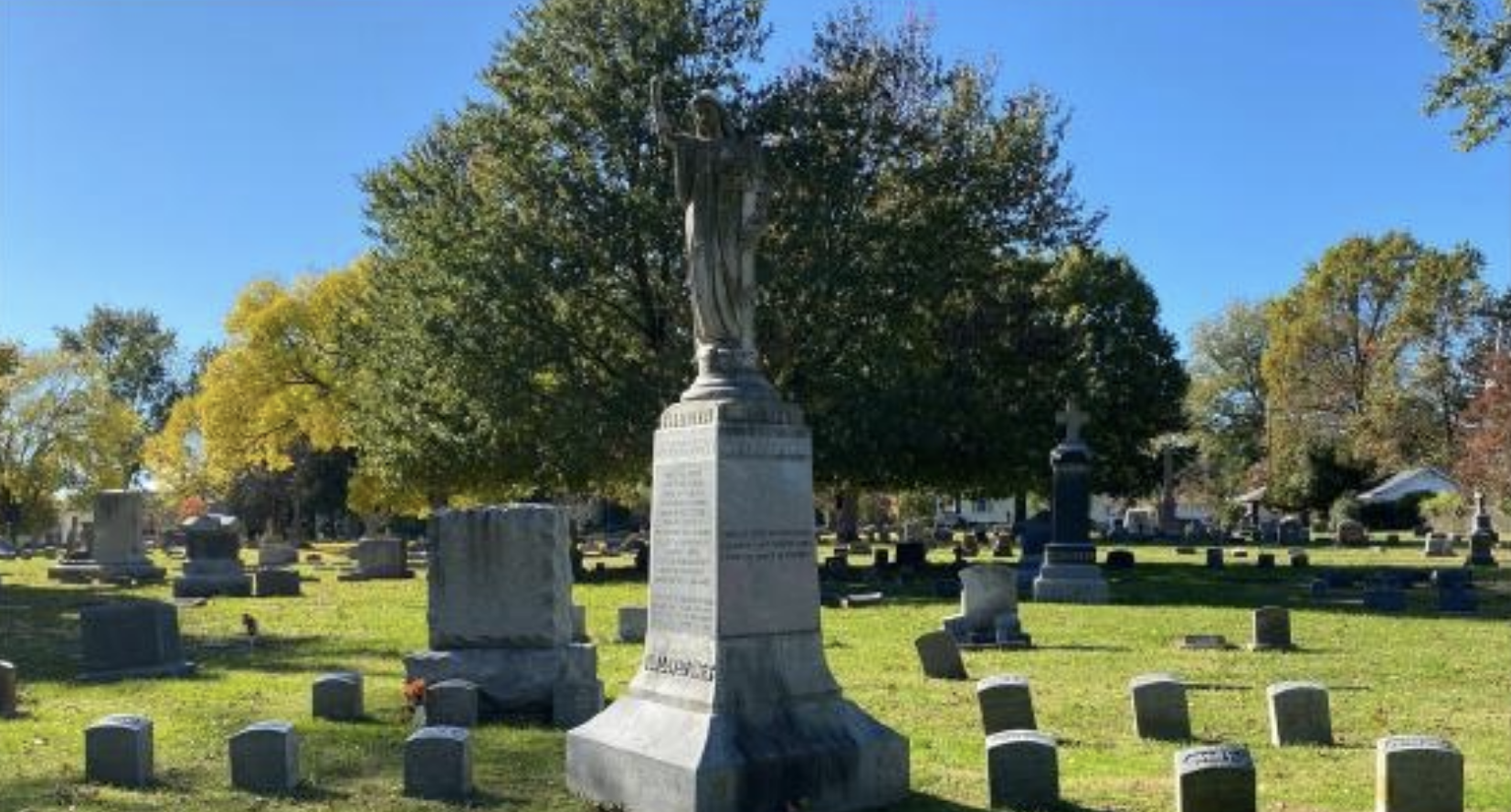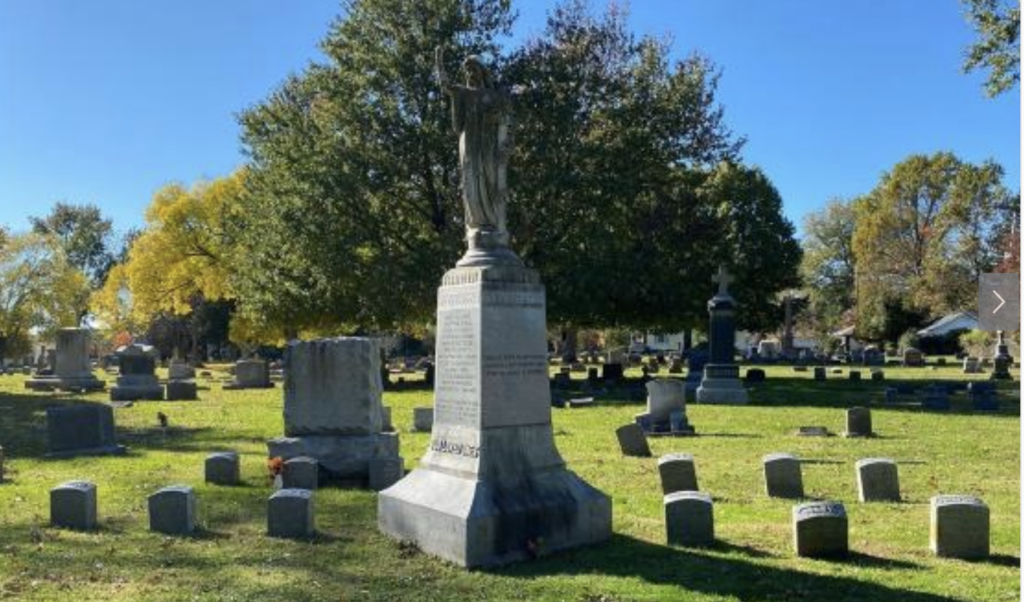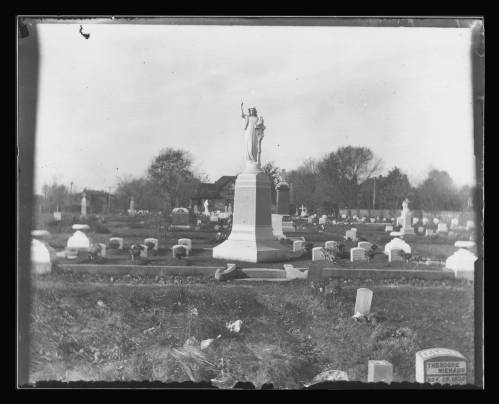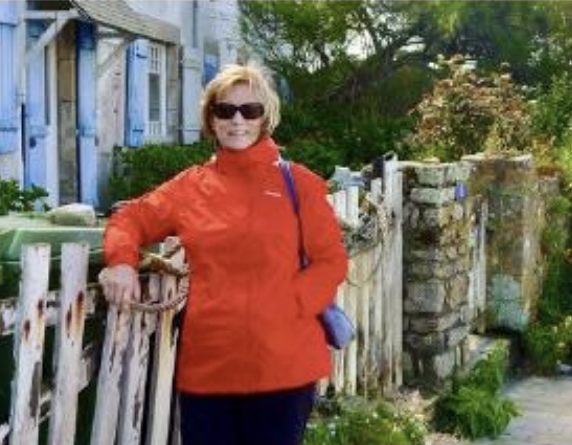The St. Francis School Fire of 1899: Grief and Sacrifice

(This is the final part of six stories about the St. Francis School fire in December 1899, when 12 girls burned to death in one of saddest chapters of the Quincy community’s history.)
Read Part 1: Prosperous Quincy of 1899
Read Part 2: Christmas is Coming to Quincy
Read Part 4: Gripping Disaster
Starting in 1900, those parents who had lost children gathered on December 22nd to talk about their girls and to help each other move through the grief. This group continued to meet every year on the anniversary for at least 30 years.
Each Christmas morning, Father Andrew celebrated three masses at the early hour services in memory of the 12 children. The masses were for the children, parents, teachers, and friends. This is one of the highest tributes that is paid to the dead in the Catholic church and is only done on very special occasions. Afterwards, many of the parents and friends and relatives visited the cemetery.
Already there was talk of having a beautiful monument erected in the middle aisle of the cemetery plot with the name of each child, along with a marble marker for each child. On the afternoon of Tuesday, December 26th – the day the school pageant was to have been given for the parents – John Werner, Joseph Freiburg, Jr., and Chris Freiburg met in the office of the Freiburg Boot and Shoe Company to start a fund to erect the monument. They called together a larger meeting for the next evening. The committee did not name any specific sum, but stated only that the size and beauty of the monument would be determined by the generosity of the town. John Werner started the fund by giving $50 and the money began to pour in.
But while the town was focusing on the challenge of raising the money for the memorial, Sister Theotima was facing a great challenge of her own. As a result of her heroic actions, her hands and forearms were so badly burned that her doctors decided that they had no alternative but to amputate them. Blood poisoning had already set in and had reached the palms of her hands. Sister Theotima readily agreed, but the doctors could not proceed without the consent of the Mother Superior of the Sisters of Notre Dame, who was telegraphed at headquarters in Milwaukee. The newspaper reads: “If the reply is what is expected, there will be no delay in amputating the hands of the sister, who is a middle-aged woman.” Sister Theotima was 29.
Consent was received and at 3:00 p.m. on Wednesday, December 29th. Doctors Johnston, Koch, Robbins, Justice and Bieme met and performed the operation. Sister Theotima’s good health and indomitable will were in her favor and she came through the operation better than anyone had expected. Eleven of the twelve girls who died were in Sister Theotima’s class and at her request, a small casket was fashioned by Joseph Freiburg and her hands were buried in the St. Boniface lot with the children. A new wave of mourning swept the town for Sister Theotima, for her heroism and sacrifice.
The school itself sustained little damage – about $400 to $500 – thanks to the quick thinking of the janitor, Koetters. He grabbed a fire extinguisher and stopped the flames from spreading to the sets and curtains. Unlike the loss of life, the school’s losses were covered by insurance. But on the stage and in the dressing room, the burned outlines of the girls bodies could be seen for a long time to come.
Other things happened as a result of the fire. St. Francis School did not reopen at the beginning of January. The opening was postponed until they could bring in sisters to take the places of those who were so badly injured.
Dr. Otis Johnston designed mechanical hands for Sister Theotima, which were fashioned by a local blacksmith. But she was never able to teach again. She returned to the Mother House and lived out the rest of her life “full of sufferings and tribulations,” as it is recorded in her memorial from her order. For one brief, bright moment, she was sent to an orphanage in Canada to supervise the recreation and study periods of the younger children. Here, a local blacksmith heard of the poor sister at the orphanage, and he succeeded in manufacturing for her a superior pair of hands by which she could feed herself and even manipulate her pencil holder when she wished to write.
It was during these years that she wrote a letter to George Middendorf – the father of Lucille Middendorf Rapp, my mother-in-law. George, as has been mentioned, was one of the school children escaping from the fire scene. Sister Theotima told him not to worry about her, that she was fine. She told him to behave himself and not be so ornery. But the family believes that she probably wrote just to demonstrate that she could still write, that a part of her old self still lived on.
Sister Theotima never returned to the classroom. She died 36 years later on May 25, 1935, at the age of 65 in Elm Grove, Wisconsin. The Quincy Herald-Whig of June 6, 1935, remembered her as the “St. Francis Fire Heroine,” the “Nun Who Saved Many From [the] Burning Building.”
Soon after the tragedy at St. Francis, measures were taken in the Notre Dame community to considerably lessen the number of school entertainments, and much greater caution was taken when they were given.
In 1957, my husband Mike was in a Christmas play at St. Francis school. He had the role of a grandfather. On the day of dress rehearsal, he brought his costume, which included a pipe, an empty pipe containing no tobacco. When he struck a match, pretending to light the pipe, he was once again reminded that no fire of any kind is permitted in St. Francis School.
And, of course, in the years since the tragedy, strict laws have been passed by the federal government ensuring that children’s sleepwear and costumes be made of fire-resistant materials and there is much more awareness of fire safety.

The monument to the girls was built, a beautiful marble monument that cost $1,000. It was designed by Joseph Freiburg, made of marble from Vermont quarries, carved in New York, and shipped to Quincy. The base is an obelisk and atop it stands an angel, a cross in one hand, the other raised to Heaven. It was erected on October 24, 1900, less than 10 months after the tragedy.
Setting aside the practice of not burying German and Irish together, the Hickey family permitted Mary’s body to be moved to lie with her classmates. All twelve of them then, as now, aside the memorial.
And what happened to Lillian and Clara Koesyan who ran home and had hidden under their bed fearful they would be spanked for leaving the new green coat behind? They grew up, and got married, and had children of their own. In another sad twist of fate, their older sister Emma married Bernard Kuhlman, who was a professional firefighter with the Quincy Fire Department. In 1917, he was killed in the line of duty, leaving behind Emma and their five children, ages 5 to 12.
Every year in November, Clara went to St. Boniface cemetery to put chrysanthemums on her father’s grave and took her three daughters with her. Once they had placed the flowers, Clara would take the girls across the cemetery, over to the monument and the graves of her twelve classmates. Clara’s daughter Pauline says, “Every year she would tell us the story of the St. Francis School fire and she would tell us stories about the little girls. Of course, they didn’t mean anything to us because we never knew them. But she did. They were her friends.” All lost on one December day in 1899.

Monument in St. Boniface Cemetery for the victims of the St. Francis Solanus Parochial School fire on December 22, 1899. Funeral services were held December 24, 1899 at St. Francis Church and eleven of the girls were buried in Block 7 Lots 25 and 28 of St. Boniface Cemetery. Mary Hickey was buried in St. Peter’s Cemetery, although there is a stone for her at St. Boniface Cemetery. The monument reads: Mary Althoff; Josephina Bohne; Irene H. Freiburg; Bernadina Freund; Mary K. Futterer; Mary E. Hickey; Wilhelmina Kottendorf; Olivia Timpe; Cecelia Vonderhaar; Mary A. Wavering; Margareth E. Werner; Suffer little children to come unto me and forbid them not for of such is the kingdom of God. St. Mark X, XIV; Our Loved Ones. Courtesy: Quincy Public Library, images from the Quincy Area Historic Photo Collection.
Closing Thoughts About Storytelling
Clara kept her friends alive by telling their stories, just as I keep them alive by telling this story, just as you keep them alive by reading and listening. It is important that we do this, not only because the girls never had a chance to have families of their own to pass down their names and memories, but because each year there are fewer and fewer people alive who can remember the event. We too should listen to and share the stories of our family so that they and we will be remembered. And the stories of other lost children.
Now that you’ve heard the story, perhaps you might want to visit the monument at St. Boniface Cemetery at 2001 State Street. If you go on a warm, sunny day, as I have, you may have a hard time imagining that windy, snowy, bitter cold day in 1899 when 5,000 people in black gathered around the graves. There are twelve markers, each bearing the name of the girl who died and the names of her father and mother.
The name of each child is carved into the marble of the monument. And the inscription says:
Herr gib ihnen die ewige Rube
Das ewige Licht leuchte ihnen
Lasse sie ruhen in Frieden.
Father give them eternal rest
Let the eternal light shine on them
Let them rest in peace.
And remember their stories.
By and copyright © Carolyn Freas Rapp

Carolyn Freas Rapp is a writer, storyteller, book lover, traveler, and mother of three grown children. She lives with her husband, Michael Rapp, in McLean, Virginia. She also is the author of Garden Voices: Stories of Women & Their Gardens, published by Water Dance Press.
Thanks to the Quincy Public Library for allowing use of images from the Quincy Area Historic Photo Collection.
Muddy River News is community journalism. Our Home. Our News. Storytelling is an important part of this. We welcome contributors to share stories and material of interest to the community. Email: news@muddyrivernews.com.
Miss Clipping Out Stories to Save for Later?
Click the Purchase Story button below to order a print of this story. We will print it for you on matte photo paper to keep forever.

